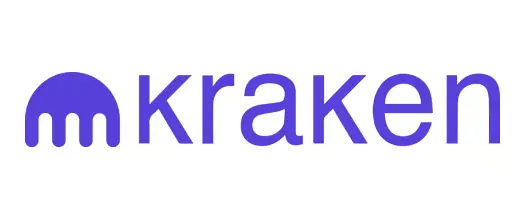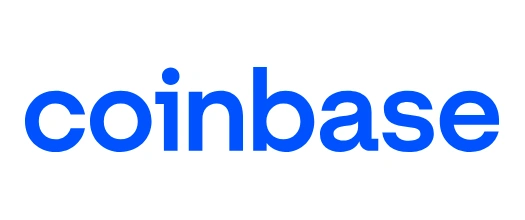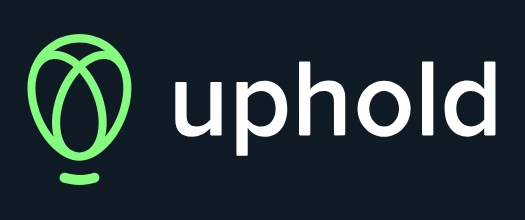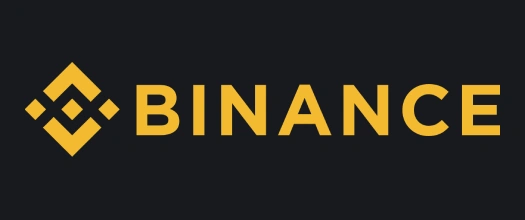The UK cryptocurrency market has experienced significant growth in recent years. In 2025, a survey conducted by Gemini showed that ownership of digital assets hit 24% in the country, a major increase from 2024, when only 18% of the population was engaged in the crypto market.
This demand has led to a surge of crypto exchanges that tailor their services to UK-based clients. One key factor that sets these exchanges apart is their cost structure, particularly when it comes to maker and taker fees.
 Kraken
Kraken Coinbase
Coinbase Uphold
Uphold Binance
BinanceBelow, you can find more information about the best crypto exchange platforms with the lowest maker/taker fees in the UK:
- Kraken uses a volume-based model for its Kraken Pro cost structure, charging maker fees from 0.00% to 0.25% on spot transactions, while its taker fees range between 0.08% and 0.40%. Customers at the lowest tier with a monthly trading volume of up to $2.5 million in crypto futures incur maker/taker fees of 0.0200% and 0.0500%, respectively. The fees for pegged tokens and stablecoins start from 0.20%.
- Coinbase is ideal for British crypto traders looking to reduce their overall expenses as it charges competitive maker/taker fees of 0.40% and 0.60% for monthly trading volumes of up to $10,000. The fees drop to 0.00% (maker) and 0.05% (taker) for volumes exceeding $400 million.
- Uphold has adopted a percentage-based model with fees fluctuating based on the assets customers trade. The rates for altcoins typically range between 2.5% and 2.95%, while those for Bitcoin and Ethereum fluctuate between 1.4% and 1.6%.
- Bitstamp boasts some of the lowest fees in the industry, charging only 0.1000% in maker/taker fees for spot transactions at the lowest tier (a monthly volume below $1 million). The percentages decrease all the way down to 0.0110% and 0.0230% at the highest tier (VIP 9).
With the rise of cryptocurrency trading in the UK, it is essential for locals to understand the concept of maker and taker fees and how these can impact one’s trading experience. By choosing an exchange with low fees, traders can maximise their profits and minimise their losses.
What are Maker and Taker Fees, and Why Do They Matter?
Maker and taker fees are charged by cryptocurrency exchanges for facilitating trades. The former affects makers, i.e. individuals who essentially provide liquidity to the market, while the latter is imposed on takers who reduce market liquidity.
These fees matter significantly for crypto trading, as they can eat into your profits, especially if you engage in high-frequency trading. Additionally, high fees can discourage traders from using a particular exchange, which can lead to reduced liquidity and lower trading volumes.
As maker and taker fees can impact one’s overall trading experience, they can also result in a higher barrier to entry for new traders. By understanding this cost structure, traders can make informed decisions about which exchanges to use and how to optimise their strategies. You can find out more about when these charges are implemented in the next section.
When Are Maker and Taker Fees Charged?
Maker and taker fees are charged under different circumstances:
Maker Fees Vs. Taker Fees
Maker and taker fees have distinct characteristics that set them apart. Maker fees are typically lower than taker fees, as makers are providing liquidity to the market. In contrast, taker fees are usually higher, as takers are reducing market liquidity. The following table illustrates the key differences between maker and taker fees.
| Fee Type | Description | Fee Rate | Example |
| Maker Fee | Charged to traders who create a new buy or sell order that is not immediately matched with an existing order in the order book. | Typically lower ( 0.1% to 0.3%) | A trader places a limit order to buy 1 BTC at £62,042, which is not immediately matched. |
| Taker Fee | Charged to traders who place an order that is immediately matched with an existing order. | Typically higher (0.2% to 0.5%) | A trader places a market order to buy 1 BTC at the current market price of £62,042, which is immediately matched with an existing sell order. |
How Traders Can Reduce Maker and Taker Fees on Crypto Exchanges?
Traders can reduce maker and taker fees by adopting several strategies. One popular approach is to use limit orders instead of market orders, as the former do not attract taker fees.
Additionally, traders can also consider using exchanges that offer tiered fee structures, resulting in lower surcharges for high trading volumes. Some exchanges also offer discounts for customers holding specific amounts of their native tokens.
By taking advantage of these options, traders can lower their long-term costs and increase their potential profits. Below, we summarise the key ways to reduce maker/taker fees:
- Choose a low-fee exchange: Research and compare the charges of different exchanges to find the one that offers the lowest fees for your budget and trading style.
- Use limit orders instead of market orders: Limit orders can help you avoid taker fees, which are typically higher than maker fees. By placing a limit order, as opposed to a market order, you can set the specific price at which you want to buy or sell a cryptocurrency, and the broker will charge you a maker fee when executing your order.
- Trade during off-peak hours: Some exchanges offer lower fees during off-peak hours, for instance, at night or on weekends. Thus, trading during these times can be a good option.
- Find an exchange with tiered fees: Some exchanges implement tiered cost structures, allowing customers to reduce their expenses by increasing their trading volume or holding a certain amount in native tokens.
- Hold the exchange’s native token: You can benefit from discounts on trading fees when holding native tokens at certain exchanges. For example, being a Binance Coin (BNB) holder entitles you to a discount on maker/taker fees on the Binance exchange.
- Use a trading bot: Trading bots can help you automate your strategy and reduce your fees by minimising the number of positions you enter and exit.
- Use a decentralised exchange (DEX): Decentralised exchanges (DEXs) often have lower fees than their traditional centralised counterparts because they do not rely on intermediaries to facilitate trades.
- Trade in bulk: Trading in bulk can help you reduce your costs as you are essentially placing fewer orders, which results in fewer fees.
- Monitor and adjust your trading strategy: Keep an eye on your trading fees and adjust your strategy accordingly. If you find that you are incurring high fees, consider changing your approach or using a different exchange.
Hidden Fees at UK-Friendly Crypto Exchanges
UK traders should be aware of any potential hidden fees when choosing crypto exchanges. Some platforms may attach additional surcharges to deposits and withdrawals made with certain payment methods. These costs can add up quickly and eat into your profits.
Certain exchanges may impose inactivity fees as well. They affect customers who have not engaged in any trading activity for prolonged periods, usually 3 to 12 months.
Traders from the UK should carefully review an exchange’s fee structure before signing up to ensure they understand all charges associated with using the services. It is also essential to read reviews and do research on the exchange to ensure it is reputable and transparent about its trading charges.
Are Low-Cost Crypto Exchanges Safe and Compliant with UK Regulations?
Low-cost crypto exchanges can operate safely in the UK, but traders must verify their regulatory status and security measures, as low charges alone do not guarantee a brand’s reputability. Crypto investors from the UK should prioritise platforms registered with the Financial Conduct Authority (FCA) that are compliant with local anti-money laundering and Know Your Customer (KYC) requirements. Reputable exchanges will clearly outline their fee structures, custody solutions, and insurance protections.
The FCA maintains a warning list of unregistered crypto firms, and you should always cross-check this before depositing funds into a given exchange. For additional safety, prioritise exchanges that offer segregated client accounts. Additionally, be aware that crypto assets are generally not protected by the Financial Services Compensation Scheme (FSCS).
In summary, these are the key checks you should perform to ensure your chosen crypto exchange is a good option in terms of its security and reputability:
- FCA Registration: Confirm the regulatory status of your exchange in the official FCA Register.
- Transparent Fees: Be on the lookout for hidden costs like inactivity, deposit, and withdrawal fees.
- Security Features: Prioritise exchanges that offer two-factor authentication (2FA) and biometric logins. Ideally, your chosen exchange should undergo regular proof-of-reserves (PoR) audits.
Is it Free to Store Your Crypto Funds at a Crypto Exchange?
It is not always free to store your crypto assets at a crypto exchange, so this is another surcharge to keep in mind when trading digital coins. Some exchanges may charge storage fees, also known as wallet or custody fees, for holding cryptocurrencies on their platforms. In some instances, you may also incur fees for transferring funds between wallets or using certain wallet services.
The storage and transfer fees can vary depending on the exchange and the type of cryptocurrency being stored. Of course, there are also exchanges that offer free storage options, especially for popular cryptocurrencies, such as Bitcoin and Ethereum.
UK traders should diligently review the fee structure of a platform before storing their crypto funds, to ensure they understand all costs associated with using the exchange. It is also essential to consider the security and ease of use of the exchange’s wallet services.
How UK Traders Should Pick a Crypto Exchange with Low Maker/Taker Fees
There are various factors a UK trader should consider before they pick an exchange. First, they should make sure that the platform’s maker/taker fees are indeed low, particularly when compared to its closest competitors.
Onboarding customers should assess a few additional factors to ensure a given low-cost brand also meets their unique needs and provides a secure, reliable, and intuitive trading experience:
- Fee Structure: Understand the exchange’s fee structure, including maker and taker fees, deposit and withdrawal charges, and any other potential costs. Look for exchanges with transparent and competitive fee structures.
- Security: Ensure the exchange has a solid security and compliance track record. Namely, it should implement safety measures such as two-factor authentication, cold storage, and regular security audits.
- Reputation: Research the exchange’s reputation online, read reviews, and check for any negative feedback or instances of non-compliance.
- Regulatory Compliance: Verify that the exchange is compliant with FCA requirements and adheres to local AML and counter-terrorist financing laws.
- Liquidity: Choose an exchange with high liquidity to ensure you can buy and sell cryptocurrencies quickly and at fair prices.
- User Interface: Opt for an exchange with a user-friendly interface to execute your trades as seamlessly as possible.
- Customer Support: Look for an exchange with reliable and responsive customer support, available through multiple channels, including email, phone, and live chat.
- Storage and Wallet Services: Consider the exchange’s storage and wallet services and ensure they are secure and easy to use.
- Mobile App: If you plan to trade on the go, consider an exchange with a reliable and user-friendly app that can be downloaded from Google Play or the App Store.
- Fiat Currency Support: If you intend to trade with fiat currencies, ensure the exchange supports your preferred currency and offers competitive exchange rates.
- Compliance with UK Tax Laws: Verify that the exchange is compliant with UK tax laws and provides necessary documentation for tax purposes.
FAQs
What are the tax implications of trading cryptocurrencies in the UK?
Cryptocurrency profits in the UK are taxable as capital gains when selling, trading, or using crypto that has increased in value over time. There is an annual tax-free allowance of £3,000 for the 2025/2026 tax year, with capital gains rates based on your income tax band. The rates are 18% for earnings falling within the basic rate income tax band of up to £37,700 and 24% for gains exceeding this threshold.
It is important to note that income tax bands can shift slightly between tax years, which may indirectly influence the rates applicable to your gains. Income taxes apply to crypto earnings treated as income, including profits from mining. Accurate record-keeping is vital, and HMRC provides detailed guidance on this matter. In general, crypto traders and investors are advised to consult a local tax professional to make sure that they are compliant with the UK’s tax laws.
Can UK-registered crypto exchanges be used by traders based in other countries?
Whether non-UK residents can use FCA-registered crypto exchanges depends on the specific exchange’s policies and the user’s country of residence. Many UK-registered exchanges adhere to strict KYC and AML regulations, which require them to verify the identities and domicile of all users. Certain jurisdictions might be restricted due to regulatory differences or higher risk assessments.
How do I protect my cryptocurrencies from hackers and other security threats?
It is essential to use a reputable and secure UK crypto exchange. Look for exchanges that have spotless track records of regulatory compliance, use two-factor authentication, and offer cold storage options. It is also a good idea to use a hardware wallet.
Can I use a UK crypto exchange to buy and sell tokens or ICOs?
Yes, many UK crypto exchanges allow you to buy and sell other digital assets, such as tokens, NFTs, or ICOs. Keep in mind that the availability of these assets varies based on the exchange.
How do I know if a crypto exchange is compliant with UK financial regulations?
To ensure that a crypto exchange is regulated and compliant with UK requirements, look for exchanges that are registered with the local financial regulatory authority, the FCA. You can also check the exchange’s website for information on their regulatory compliance and look for certifications from reputable third-party auditors.